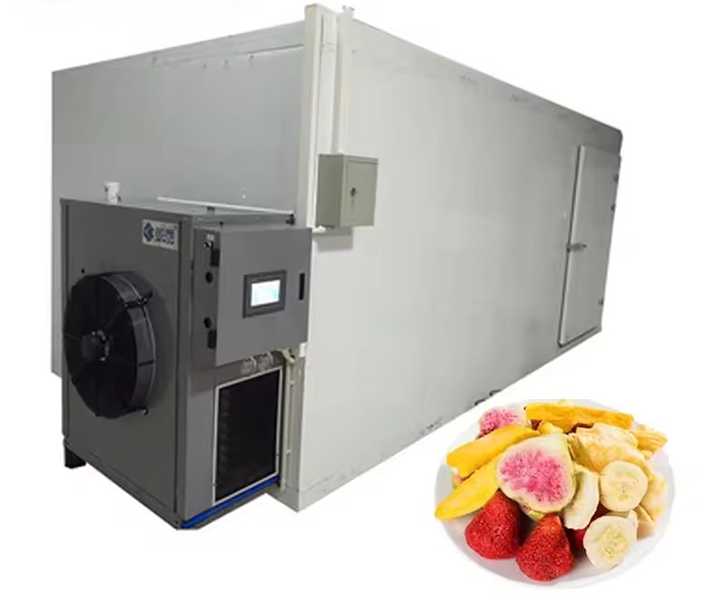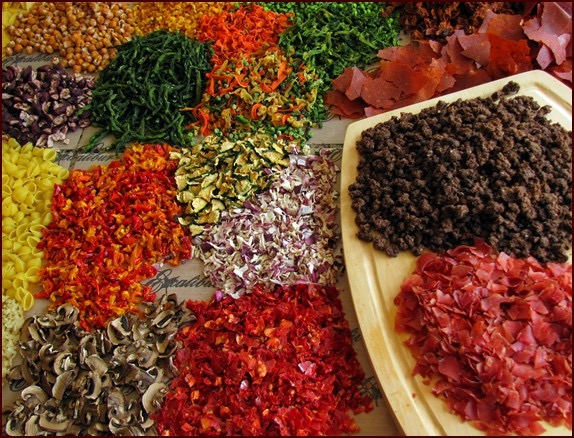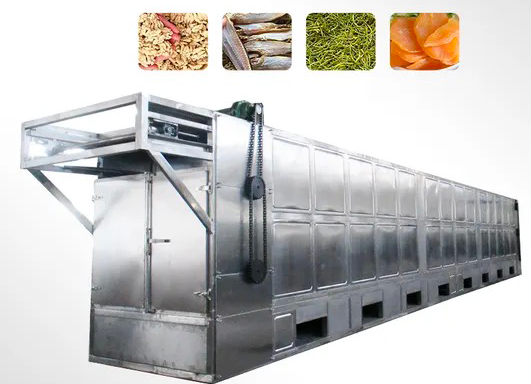
Content Menu
● Understanding Food Dehydration
● Key Features to Consider
>> 1. Temperature Control
>> 2. Fan Location
>> 3. Capacity
>> 4. Tray Material
>> 5. Noise Level
>> 6. Additional Features
● Types of Food Dehydrators
>> 1. Stackable Dehydrators
>> 2. Box-style Dehydrators
● How To Use A Food Dehydrator
● Common Mistakes When Using a Dehydrator
● Tips for Successful Dehydration
● Creative Uses for Dried Foods
● Conclusion
● FAQ
>> 1. What is the best temperature for dehydrating fruits?
>> 2. How long does it take to dehydrate vegetables?
>> 3. Can I dehydrate meat in a regular food dehydrator?
>> 4. How do I clean my food dehydrator?
>> 5. Do I need to rotate trays during dehydration?
● Citations:
Food dehydrators are essential appliances for anyone looking to preserve food, create healthy snacks, or prepare ingredients for long-term storage. With a variety of models available on the market, selecting the right food dehydrator can be overwhelming. This guide will help you understand the key features and considerations when choosing a food dehydrator that meets your needs.

Understanding Food Dehydration
Food dehydration is a method of preserving food by removing moisture, which inhibits the growth of bacteria, yeast, and mold. The process involves applying low heat to food items over an extended period, allowing them to dry out while retaining their nutrients and flavors.
Benefits of Using a Food Dehydrator:
- Preservation: Extends the shelf life of fruits, vegetables, herbs, and meats.
- Healthier Snacks: Create your own healthy snacks without preservatives.
- Cost-Effective: Save money by buying in bulk and dehydrating excess produce.
- Versatility: Ideal for making jerky, fruit leathers, dried herbs, and more.
- Flavor Enhancement: Concentrates flavors in fruits and vegetables, making them more delicious.
Key Features to Consider
When selecting a food dehydrator, consider the following features:
1. Temperature Control
Different foods require different drying temperatures. Look for a dehydrator with adjustable temperature settings to accommodate various types of food:
- Fruits typically dry at 135°F (57°C).
- Vegetables need around 125°F (52°C).
- Jerky requires higher temperatures, usually around 160°F (71°C).
Having precise temperature control allows you to achieve optimal drying results for each type of food item.
2. Fan Location
The fan's position affects airflow and drying efficiency:
- Top-mounted fans provide better airflow and prevent dripping onto the fan.
- Bottom-mounted fans may require tray rotation for even drying.
Top-mounted fans are generally preferred as they promote uniform drying without the need for constant monitoring.
3. Capacity
Dehydrators come in various sizes. Choose one based on your drying needs:
- Small capacity: Ideal for occasional use or small batches.
- Large capacity: Suitable for bulk drying or larger families.
If you plan to dehydrate large quantities at once, investing in a larger model can save time and energy.
4. Tray Material
The material of the trays impacts durability and ease of cleaning:
- Plastic trays are lightweight but may not last as long.
- Stainless steel trays are more durable and easier to clean.
Stainless steel trays are often preferred due to their longevity and non-reactive nature, which helps maintain food quality.

5. Noise Level
Some dehydrators can be quite noisy. If noise is a concern, look for models specifically designed for quiet operation.
Many modern dehydrators have made significant improvements in noise reduction technology, making it easier to use them in quiet environments.
6. Additional Features
Consider these extra features that can enhance your dehydrating experience:
- Timer: Allows you to set drying times without needing to monitor constantly.
- Automatic Shut-off: Ensures safety by turning off the machine when the timer expires.
- Fruit Roll Tray: Useful for making fruit leathers or purees.
These features can significantly improve convenience and safety during the dehydration process.
Types of Food Dehydrators
There are two main types of food dehydrators:
1. Stackable Dehydrators
These are typically round with stackable trays:
- Pros: Compact design; easy to store.
- Cons: May require tray rotation for even drying; limited space for larger items.
Stackable models are great for those with limited kitchen space but may require more attention during use.
2. Box-style Dehydrators
These have sliding trays similar to an oven:
- Pros: Better airflow; often more efficient for larger batches.
- Cons: Generally take up more counter space.
Box-style dehydrators tend to be more versatile and user-friendly, especially when handling larger quantities or thicker items.
How To Use A Food Dehydrator
Using a food dehydrator is straightforward:
1. Prepare Your Food: Wash, peel, slice, or chop your fruits or vegetables as needed.
2. Arrange on Trays: Spread the food evenly on the trays without overcrowding. This ensures proper airflow around each piece.
3. Set Temperature and Time: Adjust the settings based on what you are drying. Refer to specific guidelines for different foods to achieve optimal results.
4. Monitor Progress: Check periodically to ensure even drying; rotate trays if necessary. This step is particularly important if using a bottom-mounted fan model.
5. Store Properly: Once dried, store your food in airtight containers in a cool, dark place. Vacuum sealing can further extend shelf life.
Common Mistakes When Using a Dehydrator
Avoid these common pitfalls:
- Not pre-treating fruits (e.g., using lemon juice) can lead to discoloration or loss of flavor.
- Overloading trays can impede airflow and result in uneven drying.
- Forgetting to check moisture levels before storing can lead to spoilage if any moisture remains in the food.
Tips for Successful Dehydration
To maximize your dehydrating success:
- Slice fruits and vegetables uniformly to ensure even drying.
- Experiment with different herbs and spices when making jerky or other savory snacks to enhance flavor profiles.
- Keep a log of drying times and temperatures used for different foods; this will help refine your process over time.
Creative Uses for Dried Foods
Dried foods can be used in various ways beyond snacking:
- Add dried fruits like apples or bananas to cereals or oatmeal for breakfast.
- Rehydrate vegetables in soups or stews; they will regain some moisture while cooking.
- Use dried herbs in cooking or baking; they often have concentrated flavors that enhance dishes significantly.
Conclusion
Choosing the right food dehydrator involves understanding your specific needs regarding capacity, temperature control, noise level, and additional features. By considering these factors, you can find a dehydrator that will help you preserve food effectively while enjoying all the benefits of homemade snacks. With proper usage and care, a food dehydrator can become an invaluable tool in your kitchen repertoire—enabling you to enjoy healthy snacks year-round while reducing food waste.

FAQ
1. What is the best temperature for dehydrating fruits?
The optimal temperature for dehydrating fruits is generally around 135°F (57°C). This helps retain flavor while effectively removing moisture.
2. How long does it take to dehydrate vegetables?
Dehydrating vegetables usually takes between 6 to 12 hours depending on the type and thickness of the slices used.
3. Can I dehydrate meat in a regular food dehydrator?
Yes, you can dehydrate meat in most food dehydrators as long as they reach appropriate temperatures (around 160°F or 71°C) to ensure safety.
4. How do I clean my food dehydrator?
Most dehydrators have removable trays that can be washed in warm soapy water or placed in a dishwasher if they are dishwasher-safe. Wipe down the base with a damp cloth.
5. Do I need to rotate trays during dehydration?
If using a bottom-mounted fan model, it is advisable to rotate trays periodically for even drying results.
Citations:
[1] https://thruhikers.co/dehydrators/
[2] https://www.lowes.com/n/buying-guide/best-food-dehydrator-buying-guide
[3] https://www.thespruceeats.com/best-food-dehydrators-4077285
[4] https://create.vista.com/photos/dehydrator/
[5] https://www.youtube.com/watch?v=mtDzdYoyeR8
[6] https://soulyrested.com/choosing-dehydrator/
[7] https://www.choice.com.au/home-and-living/kitchen/benchtop-cooking/buying-guides/food-dehydrators
[8] https://www.foodandwine.com/lifestyle/kitchen/best-food-dehydrators
[9] https://www.freepik.com/free-photos-vectors/food-dehydrator
[10] https://www.hachettebookgroup.com/storey/buying-food-dehydrator/











